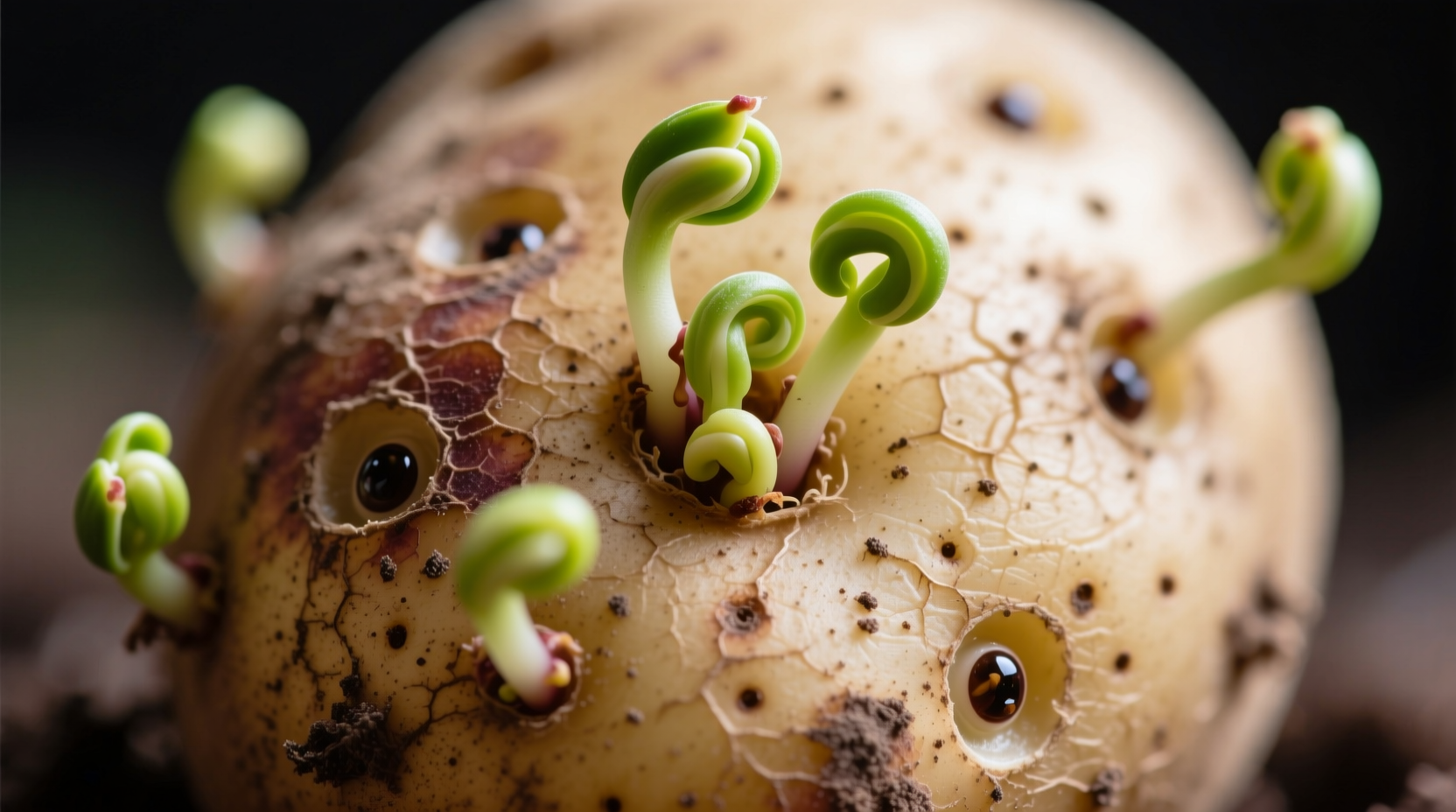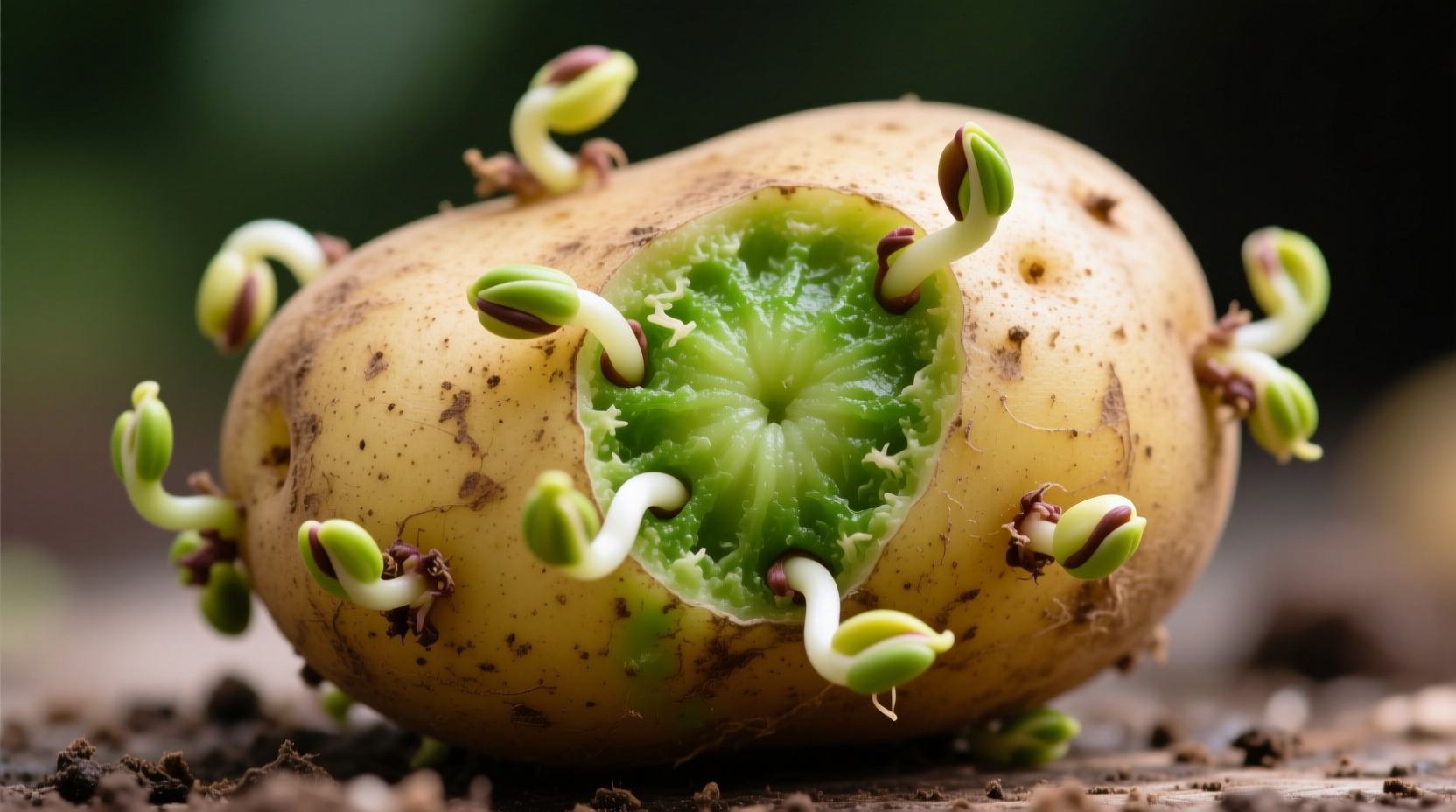Discover exactly when sprouted potatoes become unsafe, how to properly handle slightly sprouted potatoes, and science-backed storage methods to extend freshness while avoiding food waste. This guide delivers actionable food safety information you can trust.
Understanding Potato Sprouting: What Happens and Why
When potatoes begin to sprout, they're responding to environmental conditions that signal it's time to grow. This natural process triggers biochemical changes within the tuber. As the U.S. Food and Drug Administration explains, potatoes contain natural compounds called glycoalkaloids, primarily solanine and chaconine, which increase significantly during sprouting.
These compounds serve as the plant's defense mechanism against pests and sunlight exposure. While present in small amounts in healthy potatoes, their concentration can become problematic when potatoes sprout or develop green patches.

Assessing the Risks: Solanine Levels and Safety Thresholds
Solanine toxicity isn't a simple yes-or-no question—it exists on a spectrum. The Centers for Disease Control and Prevention identifies 20-25 mg of solanine per 100 grams of potato as the threshold where adverse effects may begin. For perspective, a healthy potato typically contains 2-13 mg per 100 grams.
| Condition | Solanine Level (mg/100g) | Safety Assessment |
|---|---|---|
| Fresh, unblemished potato | 2-13 | Perfectly safe to eat |
| Minor sprouting (small sprouts) | 15-30 | Safe after proper preparation |
| Significant sprouting with green skin | 30-100+ | Unsafe—discard immediately |
| Soft, shriveled with extensive sprouting | 100+ | Highly toxic—do not consume |
When Sprouted Potatoes Might Still Be Safe
Not all sprouted potatoes need immediate disposal. The USDA Food Safety and Inspection Service provides clear guidelines for determining when potatoes can be safely salvaged:
- Minor sprouting: If sprouts are small (less than 1/2 inch) and the potato remains firm with no green discoloration, it's generally safe after proper preparation
- Texture matters: Potatoes should feel solid and heavy for their size, not soft or wrinkled
- Green spots: Any green areas indicate chlorophyll development, which correlates with higher solanine levels
Safe Preparation Techniques for Slightly Sprouted Potatoes
If your potatoes show only minor sprouting but remain firm, follow these professional chef-approved steps to safely prepare them:
- Remove all sprouts completely using a paring knife—don't just break them off
- Cut deeply around each "eye" (about 1/4 inch deep) to remove the growth point
- Peel thoroughly, removing any green areas completely—solanine concentrates just beneath the skin
- Cook properly—boiling can reduce solanine levels by up to 40%, though frying doesn't significantly reduce toxins
- Taste test before serving—if bitterness remains, discard the potato
Clear Danger Signs: When to Definitely Discard Sprouted Potatoes
Certain conditions make potatoes unsafe regardless of preparation methods. The FoodKeeper app from FoodSafety.gov identifies these non-negotiable discard conditions:
- Extensive sprouting with long, thick sprouts
- Green discoloration covering more than 25% of the surface
- Soft, wrinkled, or shriveled texture
- Bitter taste even after proper preparation
- Musty or moldy odor
When in doubt, throw it out. The risk of solanine poisoning isn't worth potential food savings.
Preventing Potato Sprouting: Science-Backed Storage Methods
Proper storage dramatically extends potato freshness. Based on research from the University of Minnesota Extension, follow these evidence-based storage practices:
- Cool, dark environment: Store between 45-50°F (7-10°C)—never refrigerate
- Avoid moisture: Use paper bags or breathable containers, not plastic
- Separate from onions: Onions release gases that accelerate potato sprouting
- Check regularly: Remove any sprouting potatoes immediately to prevent spread
- Never wash before storage: Excess moisture promotes decay
Recognizing Solanine Poisoning Symptoms
While rare from household consumption, solanine poisoning requires immediate attention. The Agency for Toxic Substances and Disease Registry identifies these symptoms that typically appear 8-12 hours after consumption:
- Nausea, vomiting, and stomach cramps
- Headache and dizziness
- Diarrhea
- In severe cases: fever, confusion, vision problems, or neurological symptoms
If you experience these symptoms after eating potatoes, contact Poison Control at 1-800-222-1222 or seek medical attention immediately.
Practical Food Safety Decision Flowchart
Follow this step-by-step assessment when evaluating sprouted potatoes:
- Check for green discoloration—any present? → Yes: discard if extensive, carefully prepare if minimal
- Assess sprout size—longer than 1/2 inch? → Yes: discard
- Test firmness—soft or wrinkled? → Yes: discard
- After preparation—bitter taste remains? → Yes: discard immediately
- If passing all checks: cook thoroughly and consume promptly











 浙公网安备
33010002000092号
浙公网安备
33010002000092号 浙B2-20120091-4
浙B2-20120091-4